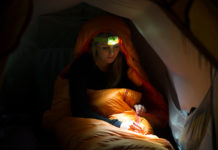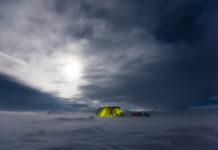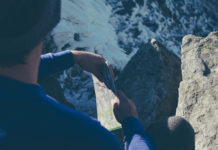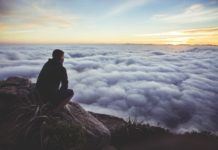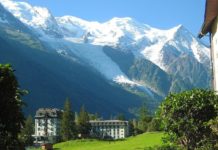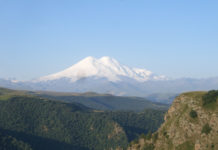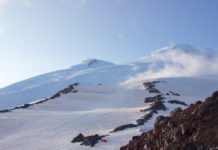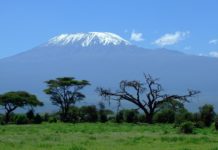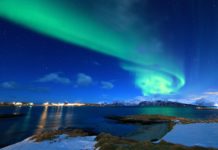So in this post we are going to take a look at the 10 essentials you need when heading out on any type of hike, climb, or camping trip etc.
But what are these 10 essentials you speak of I hear you cry!
Well my friends you should already know the answer to this, especially if you are already an avid hiker, camper, and/or climber.
Yes Yes it’s me up here on my high horse yelling down at you. But all joking aside these 10 essentials could potentially save your life. Yes! They really are that important. So to answer your original question the 10 essentials are a list or “system” of items that you should pack into your backpack before you head out on the trail. My recommendation is to get into the habit of packing each of these items every time you go on a trip.
The following are the items that are considered essential on any trip bar the obvious i.e tent
TEN ESSENTIAL “SYSTEMS”
- Navigation (map and compass)
- Sun protection (sunglasses and sunscreen)
- Insulation (extra clothing)
- Illumination (headlamp/flashlight)
- First-aid supplies
- Fire (waterproof matches/lighter/candles)
- Repair kit and tools
- Nutrition (extra food)
- Hydration (extra water)
- Emergency shelter
So let’s break down each item on said list!
1. NAVIGATION

What do you think of when you hear navigation? You think map right? Well you are correct, on every trip into the wild you should have a topographic map with you, and most importantly, you should know how to read it. You should also know how to find features on the map and just be comfortable with it.
Another essential that goes hand and hand with your map is a compass.
When you add a map and compass together you get a powerful combination that will keep you on the right track (pun intended). But there is no point in having a compass if you do not know how to use it. Again become familiar with using a compass along with your map and you will never get lost again… well hopefully!
If you want to go one step further you could throw in an altimeter watch and a GPS unit for good measure, but let me say this, use this technology as tools only, you should not rely on them, batteries run out right? Your map will always be there.
2. SUN PROTECTION

Sun glasses are extremely important because they protect your beautiful eyes! Duh. On a previous trip to Mt Elbrus ‘read about it here’ a friend of mine lost his glasses while we were travelling on snow. Only for another friend had a spare pair his trip would have been cut short. If you are travelling on glacial terrain then you 100% must have eye protection, you will go blind otherwise, simple as that. “But Phil, I’m not going to glacial terrain!” I hear you, I hear you, but it is always good to have a pair tucked away in your backpack, if only for the street credit.
Sunscreen should be an obvious one but maybe not so obvious is lip protection, make sure and grab some lip protection that has a high SPF rating, your lips and partner will thank you later.
3. INSULATION

Conditions can change by the second in the mountains, one minute you are climbing in scorching temperatures cursing the fact that you didn’t listen to me and apply lip balm and the next minute the clouds roll in and you are caught in a full on white out! It is strongly advisable to have extra layers of clothing for such situations. So that means hats, gloves, fleeces etc. It all depends on the time of year and where in the world you are. But always be prepared for every eventuality.
4. ILLUMINATION

When leaving for the mountains you should always pack your head torch, even if you plan on only staying out for a day hike, you don’t know what situation you might get caught up in or how long it might take to get off the mountain. Most people use head torches because it leaves their hands free, you can also pack a hand torch if you wish and some of these can be very powerful and useful when getting the attention of a rescue party if necessary. Side note always remember to carry spare batteries and a spare bulb, that being said most head touches these days are LED and don’t use bulbs.
5. FIRST-AID SUPPLIES

Always take a first aid kit with you into the mountains; I cannot emphases this enough!
They come in all shapes and sizes, you can buy pre-assembled kits or make up one yourself, it’s up to you. Any first aid kit should have the following: bandages of all sizes, gauze pads, tape, disinfectant, pain meds, pen and paper & blister treatment. Obviously the length of your trip and where you are going will dictate what you put in your kits.
6. FIRE

And then there was light and heat, the two essentials for survival in the world today and for when you are out and about. When packing for your trip don’t forget to include some sort of fire starter with you i.e. lighter or matches.
If you choose to bring matches then make sure they are waterproof and are stored in a waterproof container. Lighters are always handy but always bring waterproof matches as a backup.
7. REPAIR KIT AND TOOLS

Why would you want to bring a multi tool or pen knife on your trip, well here are a few reasons. Gear repair, first aid, food prep and other emergency needs, you might have to take on a grizzly bear with your little pen knife. Huh? Well it’s better than your fists isn’t it?
Repair kits should also include adhesive patches for your waterproofs, cable ties, thread and patches for repairing a hole in your inflatable mattress, after all, who wants to sleep on the rocky ground. Also don’t ever ever forget the best repair item of all time, duck tape!!! Wrap some around your walking poles!! Can’t recommend this one enough.
8. NUTRITION (EXTRA FOOD)

Always pack extra food, try to pack and extra days supply. If you get caught in a tough situation and cannot move while waiting for mountain rescue you will be glad you packed that extra snickers bar. Trust me you will.
Pack some high calorie food like chocolate bars, nuts, dried fruits etc. Pack an extra bag of freeze dried food; they are very compact and light.
Remember, if it’s cold then eat something, the digestion process actually heats you up. The same goes for when you are going to bed, eat well and you will stay warm in your bag.
Check out our tips for staying warm!
9. HYDRATION (EXTRA WATER)
Have you ever heard the “rule of 3”? You can survive 3 minutes without air, 3 hours without shelter, 3 days without water and 3 weeks without food. Obviously this will not be accurate for everyone but it gives you an idea.
So, water, you can only survive 3 days without water!!! Water is important my friends. You should always pack a 1 litre bottle of water and if possible another collapsible one. If you are going on a long trip then bring some sort of water treatment or filtration device.
10. EMERGENCY SHELTER

Ok, so you are saying to yourself, “Phil, I’m only going on a day trip, why on earth would I bring an emergency shelter, it’s just going to take up room in my pack and weigh me down?”
I know, but believe me it could actually save someone’s life or more importantly your life.
Ok, so if you get lost or fall and break a leg you are possibly going to be spending the night out on the hill, right? Well an emergency shelter is better than nothing and they actually keep you very warm. My own emergency shelter is just like a tents outer layer that you wrap around and under your bum, it keeps the wind and rain off you while you are waiting for rescue or just waiting out that storm.
CONCLUSION
Well folks that’s it for our installment on the 10 essentials. As always Sleepingwild’s main concern is your safety outdoors besides this you don’t want something as silly as a burnt nose or cold hands ruining your outdoor adventure. So, until next time keep safe out there.




